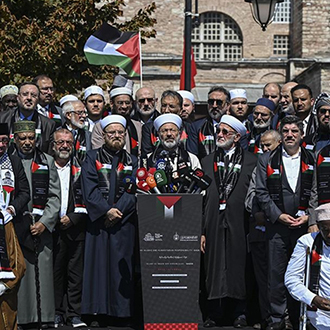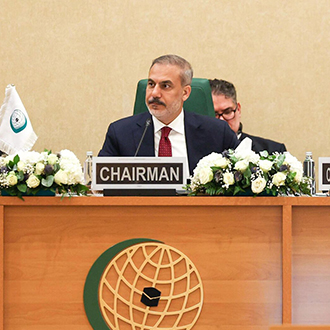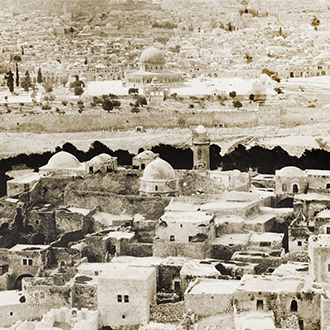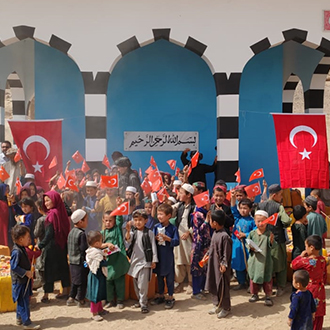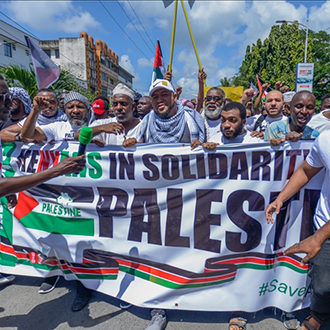Throughout the Ottoman era, and even preceding the 19th century, pious Jewish communities migrated to Palestine and al-Quds, to spend the last days of their lives there. Notably, following their expulsion from Spain in the 16th century, a contingent of Sephardic Jews established settlements within the region. Historical records indicate the arrival and settlement of additional Jewish communities within the region during the 18th century. Concerns regarding increased Jewish immigration emerged within the Ottoman administration during the late 18th century, prompting an official investigation. Commencing in the 1840s, Palestine witnessed a notable influx of Jewish immigrants from Prussia, the Netherlands, Russia, Poland, and Hungary, with hundreds arriving annually. The establishment of Jewish neighborhoods within Palestine became a particularly notable trend during the latter half of the 19th century.
Only in the late 19th century, under Abdul Hamid II’s reign did the Ottomans perceive prior Jewish settlements as a threat, implementing restrictions. Non-Ottoman Jewish immigrants were required to obtain Ottoman citizenship and resettle in either Syria or Iraq, with settlement in Palestine restricted. Jewish pilgrims who remained in al-Quds beyond the authorized period faced restrictions on their residency. Ottoman regulations limited their stay in Palestine and alQuds to a maximum of one month. However, persistent interventions by foreign consuls, particularly those representing Great Britain, hindered the Ottoman Empire’s efforts to fully implement these measures as the empire was in a period of decline.
Driven by pogroms in the Russian Empire between 1880 and 1914, over two million Jews were forced to flee abroad. Jewish immigration to Palestine following the Russian pogroms of 1882 and 1905 exacerbated the situation. An influx of tens of thousands of Russian Jews to Palestine in the early 20th century altered the demographic composition of the region.
Especially after the First Zionist Congress organized by Theodor Herzl, the founder of political Zionism, in Basel, Switzerland in 1897, the settlement movement began to transform into a planned occupation with political objectives. While the authorities implemented restrictive measures, they proved ultimately ineffective in hindering the organized settlement of Jewish groups in the region.
Let us illustrate with a reference to Ottoman documents in the case of al-Quds to demonstrate how these seemingly innocent settlements turned into colonization and occupation. In the first half of the 19th century, the population of alQuds, which was around 11.000, consisted of 6.000 Muslims, 3.500 Christians, and 1.800 Jews. By the end of the same century, the population of al-Quds had grown to 45.000, according to Ottoman reports, with 30.000 of this population being Jews holding passports from European countries. By 1900, the Jewish population of al-Quds had grown to an estimated 35.000, while the Muslim and Christian communities each numbered around 10.000. According to a report dated December 2, 1897, found in the records of the Ottoman Ministry of Foreign Affairs, it was noted that a Jewish settlement established just six years prior in a village in al-Quds had grown to a population of 200, marking al-Quds as a Jewish town.
The creation of the Jewish National Fund (JNF) at the Fifth Zionist Congress in Basel in 1901 marked a significant shift in the settler occupation of Palestine. During the early 20th century, the JNF played a significant role in the acquisition and occupation of the Palestinian territories. The relaxation of restrictions on land sales to Jews, previously limited under Sultan Abdul Hamid II, facilitated these developments.
The Balfour Declaration in 1917, which supported “Palestine as a homeland for the stateless Jewish people”, the British occupation, the collapse of the Ottoman Empire at the end of World War I, and the establishment of the British mandate in Palestine in 1920 were important cornerstones in the process leading to the establishment of Israel in 1948. In 1920, Jewish immigration to Palestine was legalized with the appointment of the British Herbert Samuel, a British administrator of Jewish heritage, as High Commissioner for Palestine. It should be noted that plans to establish a Jewish university in al-Quds emerged soon after British control of Palestine began. The foundation stone for this institution was laid in 1918, with its official opening following in 1925. This is the Hebrew University, built on the highest hill in al-Quds at 826 meters, called Jabal al-Masharif or Jabal al-Mashhad by the Arabs and Har HaTzofim or Mount Scopus by the Jews.
Another important cornerstone of the cleansing of Palestine from Palestinians was the Jewish Agency, established in 1929. The Jewish Agency, founded to organize and finance Jewish immigration to Palestine, played a pivotal role in the establishment of the State of Israel. Concurrently with these developments, growing tensions and anxieties within the Palestinian population manifested in a series of uprisings against the British Mandate. The first of these uprisings was the Nebi Musa riots in 1920. Discontent further escalated in 1929, culminating in the Buraq Wall and Halil riots (1929 Riots). The rise of Adolf Hitler to power in Germany in 1933 triggered a significant increase in Jewish immigration to Palestine. This influx, coupled with ongoing tensions, led to a series of uprisings throughout the 1930s. The influx of tens of thousands of Jewish immigrants from Germany triggered the outbreak of the Great Revolt in 1936. In 1939, thousands of Palestinians were killed and wounded by the Jews, with great support from the British. As a result of mass displacement tens of thousands were uprooted from their homes and cities. In the face of these riots, Jewish groups such as the Haganah and Irgun played a major role in the displacement of Palestinians with their attacks and assassinations. Concurrently, there was a sustained increase in Jewish immigration to al-Quds and Palestine.
After World War II, Jews who were subjected to the Holocaust by the Nazis were compensated with the formalization of the occupation of Palestine. In November 1947, the United Nations formalized the occupation in western parts of al-Quds by dividing British-mandated al-Quds into two parts, Arab and Jewish areas (Corpus Seperatum).
When the Arab rulers naturally rejected this occupation plan, Palestinian Muslims were punished, just as they are today. The violence unleashed by terrorist organizations such as the Irgun and the Haganah led to further devastation of the Muslim population. On May 14, 1948, the State of Israel was established. The following day, May 15, which Palestinians commemorate as the Nakba (Arabic for “great catastrophe”), witnessed a mass displacement of the Palestinian population from their homes. Israel seized 774 settlements and expelled Palestinians from 531 towns and villages. 720.000 Palestinians were forced to flee to neighboring countries such as Lebanon and Jordan. Israel soon cemented its occupation by declaring the West of al-Quds as its capital in 1950. In the 1967 Six-Day War, known as the Naksah (Setback), they occupied all of Palestine, including East of al-Quds. Israel has built twelve settlements of 200.000 inhabitants in al-Quds alone in order to destabilize the demographic balance and has cut the city off from other Palestinian cities with the walls of shame. Since 1948, Israel has strictly implemented the “Plan Dalet”, the policy of expelling Palestinians from Palestinian villages and towns and replacing them with Jewish populations (ethnic cleansing). Since 1967, Israel has constructed in excess of 230 settlements within the West Bank, East al-Quds, and Golan Heights. Over 300.000 occupiers reside in these residential units established through occupation in East al-Quds.
Today, 50 percent of the world’s total Palestinian population lives in Palestine and the other 50 percent lives abroad. However, given the current rate of population growth, the Palestinian population in the West Bank and Gaza will soon outnumber the Jewish population. This is because the Palestinian population growth rate is 33 % higher annually than that of Israelis. Moreover, Palestinians have a young and dynamic population compared to Israel. Gaza has the highest population growth rate in Palestine. Had it not been for this latest Israeli offensive, Gaza’s population was expected to reach 5 million by 2050. For this reason, Israel is expanding the number of occupying settlements and employing various methods to displace Palestinians from their lands. Israel’s current occupation of Gaza and its ongoing attacks should be assessed from this framework.




